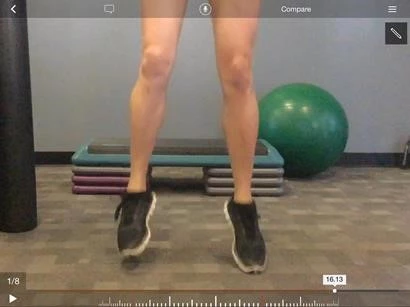Anterior cruciate ligament, or ACL, injuries are extremely common in youth sports. While you may think these infamous knee injuries only result from collisions between players, like getting hit or tackled, most ACL tears occur without contact. Most often, they occur when coming down from a jump or cutting/pivoting.
Recovery from an ACL injury is a lengthy and costly rehabilitation process. To help prevent ACL injuries from occurring in the first place, we carefully examine how our athletes land when they come down from a jump.
Ideally, a “perfect” landing distributes weight equally across both the left and right leg, with the knees and hips bending slightly to absorb force and both knees tracking over the feet.
Whether due to lack of strength, pain, or simply poor coordination, many athletes veer from this optimal landing pattern and can put themselves at increased risk of injury. Identifying these faulty landings can help prevent injuries in healthy athletes and determine when an athlete is safe to return to sports after ACL reconstruction.
One tool used by physical therapists and athletic trainers to help with this process is the Landing Error Scoring System. This system involves watching an athlete land from the front and side and identifying specific faults in their landing mechanics.
Common Landing Issues



Chris Gabriel, OCS (Board Certified Orthopedic Specialist), CSCS (Certified Strength and Conditioning Specialist)
Back




Leave a Comment